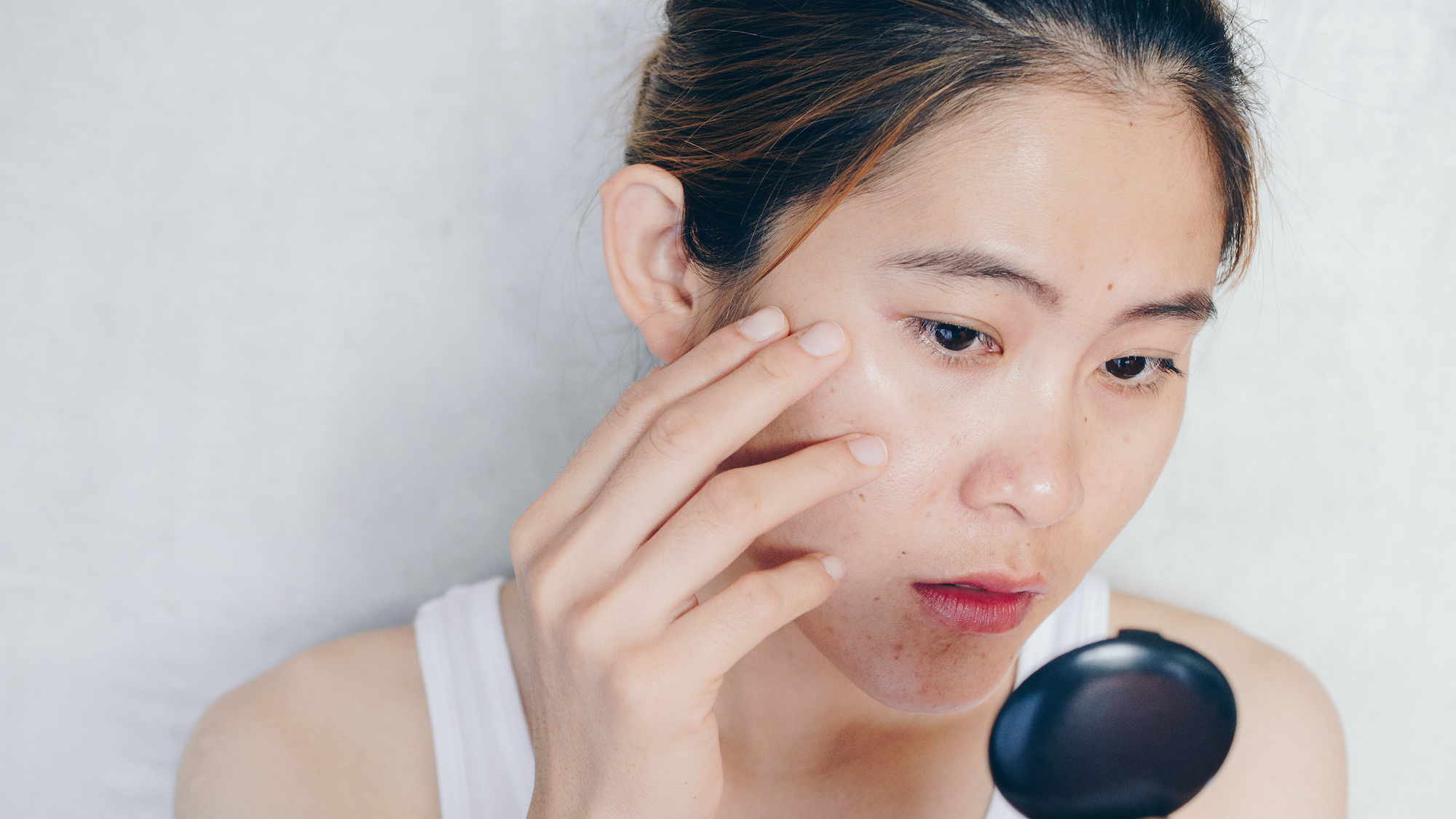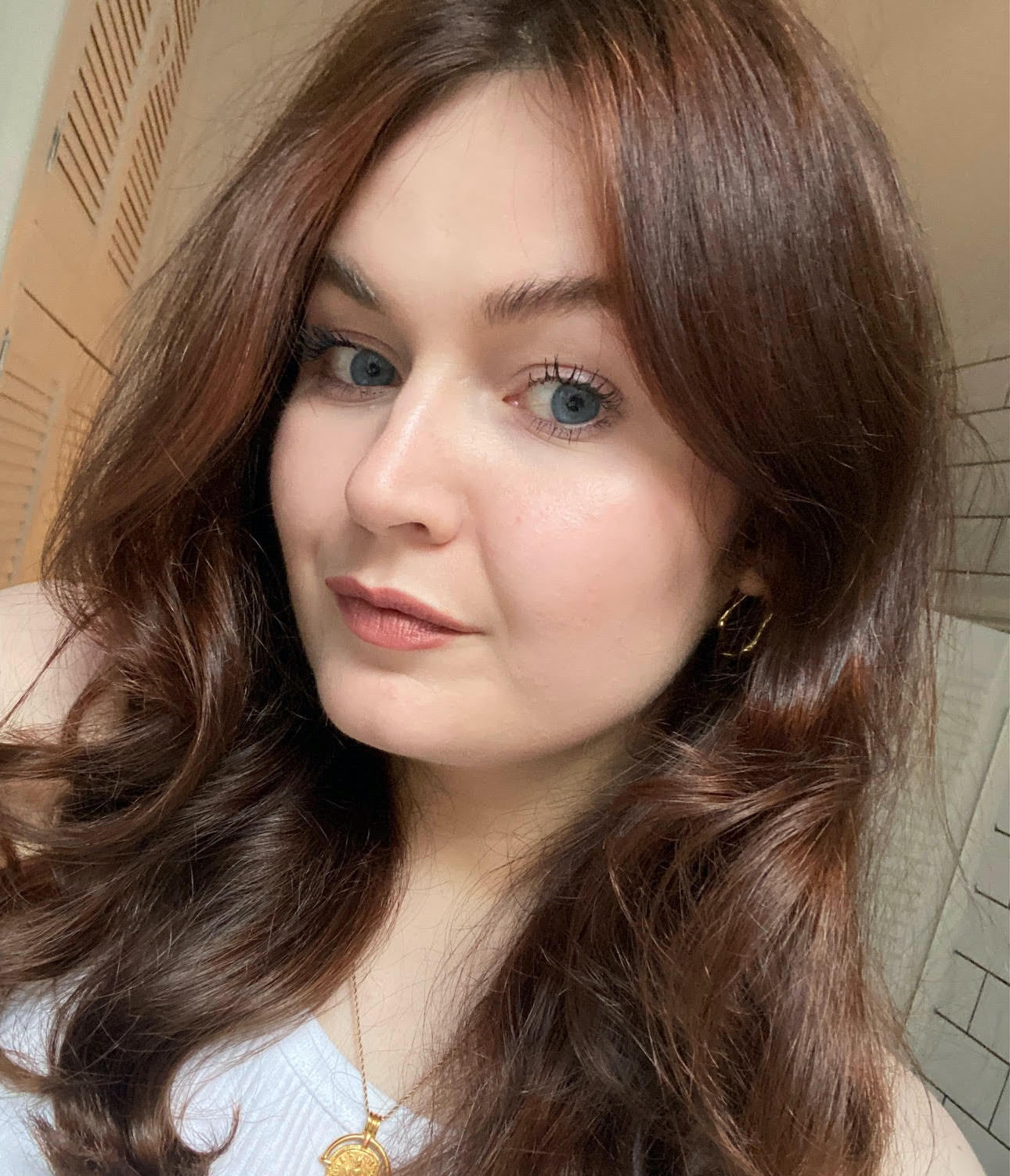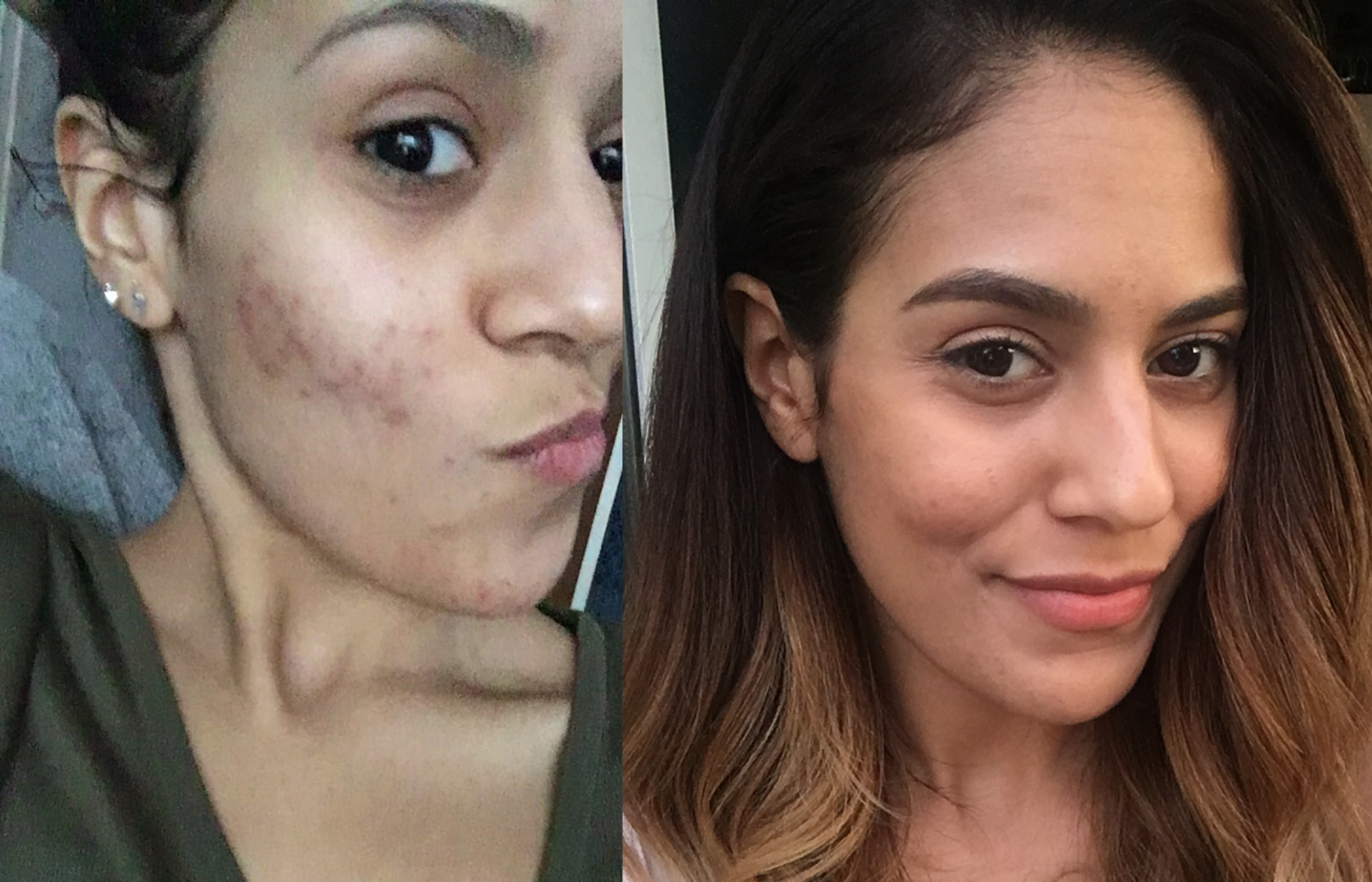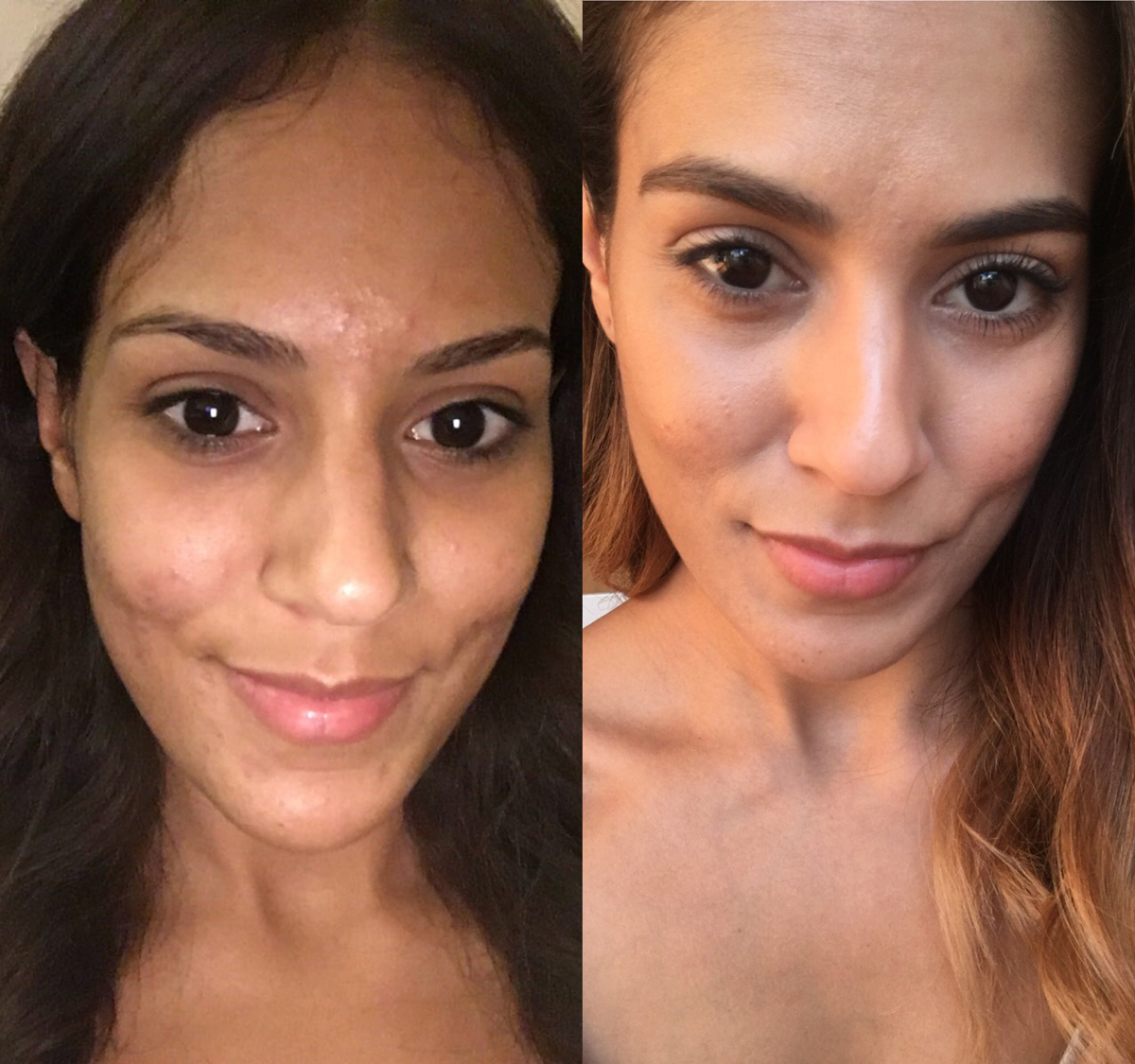"I finally cleared up my acne and these are the skincare ingredients that helped"
One beauty journalist shares the products and skincare ingredients that helped to clear up her adult acne


Lamya Tilmatine
If you've ever experienced acne you'll know that, despite being a very common condition (the NHS estimates that 95% of people between the ages of 11 and 30 are affected to some extent), it can massively impact your confidence levels.
Everybody's skin responds differently, but the best acne treatments are an important factor in managing this condition long-term – as is building a strong skincare routine for acne.
To that end, beauty journalist Lamya Tilmatine has shared her journey from a heavily blemished 27-year-old to a fresh-faced, acne-free woman who no longer feels the need to wear even the very best foundation. Although every acne journey is unique, and you should always consult your doctor or dermatologist for personalised advice, her firsthand experience of the condition may prove helpful to those with similar struggles. Below she tells us about her acne journey, from trialling the best spot treatments to making changes to her lifestyle.
Details were correct when this article was first published in 2018
How I cleared up my acne: the lifestyle changes and skincare products that helped me
I was staring at my reflection in the bathroom mirror with a face riddled with pimples and scars. This was no regular breakout – I had acne.
The pimples, some red and swollen others with whiteheads, were angry and quite painful, particularly to look at. At the time I was a 26-year-old teacher in Dubai, literally living the dream. Only it felt like my skin had completely hijacked my life. I couldn’t wear makeup without it caking around my spots, evenings out were ruined by my low self-esteem and feeling self-conscious, and the heat only seemed to make things worse.
To top it all off, I had spent hundreds trying excessive amounts of skincare with big names, bigger promises, and a long ingredient list – which I later learned had probably made my acne much worse. Nothing was working and I began to hate going out. I didn’t even want my husband to look at me for long periods of time during conversations.
Marie Claire Newsletter
Celebrity news, beauty, fashion advice, and fascinating features, delivered straight to your inbox!
I decided it was time to take back control of my skin.
What didn't work for my acne?
The first thing I did was research acne treatments that had worked for others, but they were either too expensive or lacked evidence. Sudocrem helped with inflammation and reduced the swelling of some pimples, but that was all. However, I did find plenty of information on key ingredients that help with acne, the main one being salicylic acid.
I popped down to the local shop and bought a generic face wash and matching moisturiser, which had salicylic acid listed in the ocean of ingredients printed on the back. After a week, it seemed to have made my skin worse.
I then turned to products containing tea tree oil, which is thought to help acne. This had some effect, but after months of using it as a toner, wash and spot treatment my skin became dry, flaky, and immune to its antibacterial properties. I ended up having dark patches of dry skin around my chin and mouth, so I dialled things down to only using it as a toner.
After months of sticking to my new skincare routine, little had changed, so I booked an appointment with my doctor. She prescribed antibiotics, which I wasn’t too pleased about as I wanted something that I could sustain long-term; I didn’t want to have to rely on antibiotics for clearer skin.
After two weeks they had helped reduce one or two pimples but they didn't seem to be able to keep up with the rate at which new pimples were forming. In a day, I could easily have two new pimples join the pimple party that was on my face. It was time to try something else.

Lamya's skin changes during her acne journey
What causes acne?
"I commonly see the following cycle: girl breaks out, girl panics, girl applies heavy-duty makeup to conceal blemishes… The acne worsens, so she applies more make-up," says cosmetic dermatologist and skincare brand founder Dr Sam Bunting, perfectly summing up my life with acne.
It is really important to understand what type of acne you have and how it is caused. With acne, the skin's sebaceous glands are over-producing oil – also known as sebum – which clogs our pores, causing them to become infected and resulting in acne.
Acne can take the form of "small red bumps – papules, red bumps with a white head – pustules or deeper, tender more lumps lesions – nodules and cysts," explains Dr Bunting. These spots are the result of blocked pores, too much oil, and the clogging of follicles with dead skin cells and grime from the day. The little bumps found on our skin are sometimes open to air (blackheads), Dr Bunting explains, which the P. acnes bacteria thrives on if clogged and oily.
Diet and acne
I then looked at changing my lifestyle in the hope of pinpointing (and removing) a trigger. I began by drinking more water and cutting out all processed food, including genetically modified meat and dairy, as these "contain male-like hormones (androgens) and trigger our sebaceous glands into clogging up," Dr Bunting explains. "It’s much like the effect of our androgens in the week before our period."
There’s also a link between highly-refined sugar intake and acne: goodbye, chocolate. "It increases insulin-like growth factor… this has been shown in some studies to increase acne lesion count, especially in women," our doctor notes.
After a few weeks of watching my diary and sugar intake, I noticed my skin's texture had improved and my skin was less volatile; my adult acne seemed to have been brought on by a change in either my hormones or stress levels – and evidently my diet had also played a role.
What worked for me and my acne
Dr Bunting also stresses that "the right skincare and make-up make a huge difference [and that] the key is to use non-comedogenic products." This last term means that a formula is non-pore-clogging and so won’t aggravate blemish-prone skin further.
"Inflammatory acne is best treated with topical agents like benzoyl peroxide and salicylic acid [and] non-inflammatory lesions [aka whiteheads and blackheads] are best treated with retinoids," (for example, retinol), she confirms.
As for products I personally found helped my acne, I used Dr Barbara Sturm’s Cleanser, £50, Space NK, which contains salicylic acid and was extremely gentle on my skin. The acid helps to unclog the pores and slough away the build-up of dirt and dead skin cells, which in turn prevents pores and blackheads from becoming infected. I’d also recommend La Roche-Posay Effaclar Purifying Cleansing Gel, £13.50, Boots, as it’s ideal for calming and minimising inflamed pimples.
Glycolic acid, also known as AHA (alpha-hydroxy-acid), offers a deeper clean as it penetrates further into the skin due to its smaller molecules. I used Proactiv’s Glycolic Mark Fading Pads as a toner treatment and SkinCeuticals Glycolic 10 Renew Overnight, £80, Lookfantastic, as a peel for extensive exfoliation of dead skin cells. Lixir Skin’s Night Switch PHA/AHA 10%, £20, Liberty London, is a small bottle but a potent product that you can add to your face oils or moisturisers for an overnight treatment.

Lamya during her journey to clearer skin
To treat testy pimples head-on I used another salicylic acid product, Mario Badescu Drying Lotion, £16.25, Cult Beauty, which I dotted on each of my pimples. It packed a punch and stung slightly, but it clearly worked as pimples were visibly smaller – no doubt thanks to the anti-inflammatory properties of zinc and calamine lotion.
To moisturise, try and stay away from mineral oils and incorporate blemish-friendly ingredients like rosehip oil and jojoba oil.
One product that can help with blemish-prone skin, which I found safe to use on my own, is Herbivore Lapis Balancing Facial Oil, £65, Space NK, which contains the hero ingredient azulene that fights bacteria and is anti-inflammatory. Trilogy Rosehip Oil, £19.50, Lookfantastic, is another great facial oil. High in fatty acids, it leaves skin feeling silky smooth and refined with a slight healthy glow.
If you prefer a cream, La Roche Posay Effaclar Duo+, £18.50, Boots, is a winner for hydrating, correcting and reducing inflammation.
Dr Sam Bunting's acne tips
- Stress can trigger our sebaceous glands to produce more oil, so (although it sounds easier said than done) try to chill
- The sun thickens our skin’s protective outer layer, which makes it susceptible to clogging. The best facial sunscreens and best sun cream are essential
- The wrong skincare can trigger/worsen acne – anti-ageing products may be "poorly formulated for blemish-prone skin"
- Stay away from heavy-coverage, long-wear foundations
- Powders are prone to clogging pores
- Eating a diet rich in plant-based foods with micronutrients like nuts, spices, and omega-3 fatty acids helps maintain an anti-inflammatory diet
- PCOS is a common condition that affects women and will often trigger acne, as well as hair loss and excess facial/body hair. If this is a concern, please see your doctor
I hope that my journey to acne-free skin helps you in yours. A final note of advice? Avoid touching blemishes – but if you're finding it hard to avoid playing with your spots, do check out Marie Claire's guide on how to pop a pimple safely.

Lucy is a freelance beauty editor and contributor at Marie Claire, and has also written for titles including Cosmopolitan, Refinery29, Glamour and woman&home. She was previously Marie Claire’s junior beauty editor. During her career, she’s covered everything from backstage beauty at fashion week to interviews with famous faces like Drag Race royalty and Little Mix. As for her beauty ethos, she’s a big advocate for not having to spend a fortune on beauty products to get good results. When she’s not got beauty on the brain you’ll probably find her reading or Netflix-ing.
-
 Andrea's It List: Finishing touches that elevate any outfit
Andrea's It List: Finishing touches that elevate any outfitDon't underestimate the power of accessories that make your outfit pop
By Andrea Thompson
-
 The fashion set is obsessed with lace-up shoes right now—these are the best pairs to shop
The fashion set is obsessed with lace-up shoes right now—these are the best pairs to shopNew summer footwear obsession, unlocked
By Sofia Piza
-
 I tried Pilates roll-downs every day for a week - and was amazed at how quickly it eased years of stiffness
I tried Pilates roll-downs every day for a week - and was amazed at how quickly it eased years of stiffnessConsider my spine more mobile than before.
By Rebecca Shepherd